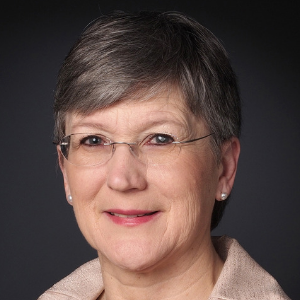Making a Makerspace that Really Serves Makers: Five Simple but Not Easy Lessons Learned
“The best lessons are the ones bought and paid for,” my grandmother would often say. Some of the best lessons are quite simple, and sometimes these simple lessons are not so easily learned. This wisdom holds true for making a makerspace that truly serves those that it was intended to serve: the makers themselves. Through trial and error and a few moments of frustration and sleepless nights, all of those involved in the vision, mission, and operations of the Thomas P. Dalton IDEA [Innovate. Design. Engineer. Accelerate.] Center at Patrick Henry Community College in uptown Martinsville, Virginia, can proudly share five simple but not easy lessons learned as we have worked to make our makerspace the best that it can be for our makers.
Lesson One:
Simple exposure, discovery, and exploration are innovative processes. While innovation does involve original research, sophisticated thought processes, and complex problem solving, the road to innovation may be paved with simply exposing an individual to the makerspace itself. The makerspace provides a land of discovery and opportunity for novice makers to freely explore equipment, tools, and software. By starting everyone who comes to the Fab Lab with a basic workshop on safety, use of available equipment and tools, and introductory instruction on many of the beginner-friendly machines, we provide a simple but solid launch point.
Lesson Two:
Embracing the “messiness” of making in makerspaces ironically “cleans out” innovation barriers. On most days the Fab Lab is full of new projects, abandoned projects, failed projects, and mysterious “stuff.” Through the fog of the clutter organized chaos arises. A makerspace can be an uncomfortable space for those who like cleanliness and order. However, the mess is a necessity. A failed prototype perched on a workbench next to the latest design beautifully illustrates innovation in action. Makers often comment that the trials and failures of other makers around them inspire and motivate them to try, fail, analyze, and try again. Some good shelving, storage lockers, and supply bins help organize the clutter from time to time, so that the next maker, especially the brand-new maker, can better utilize and enjoy the makerspace. In this hub of discovery and innovation, messy is good [regardless of what our mothers told us]!

Community lab space at the IDEA Center
Lesson Three:
A makerspace is a permanent work in progress with no finish line in sight. Regardless of how impressive the equipment, how expansive the collection of support tools, or how bountiful the supplies, the need-want-wish list retains its infinite, no-closure status. In search for the latest and greatest technology, makerspace visionaries maintain long lists always. Makers help drive discovery for a makerspace as they explore new technologies to help solve their latest design-build challenge. What is really important, though - perhaps counterintuitive to a “cutting-edge at all costs” mindset - is that older technologies may still have value in the makerspace. As new makers-to-be come to the makerspace, the less-than-latest-and-greatest equipment may still be useful, so transitioning the new into the current equipment and tools sets remains an important part of the ongoing operational assessment and inventory review. Supplies too must be constantly replenished, which gets quite expensive. Inventory controls, proper storage, and monitoring make good sense because the supply list will rarely if ever be blank.
Lesson Four:
A successful makerspace demonstrates a blended appreciation and presence of old and new, basic and advanced, yesterday’s and tomorrow’s technologies. A standard heat press sits close to a cutting-edge vinyl cutter (no pun intended), just as the woodworking lathe shares its old-world presence with the latest in Shopbot CNC routers. Our community enjoys a legacy in furniture making and woodworking, so many find a connection to these older technologies as they engage with the newest ones. Woodworking, coatings, fiber and textiles, and many others function in harmony with 3D printing, CNC routing and milling, and design modeling. An exciting dimension of appreciating the blending of old and new can be found in a concept called a “Breaker Space” [makerspaceforeducation.com]. Old, broken, and otherwise unusable appliances, electronics, toys, and other items find a home in this space, designed for breaking items in order to learn and discover how they work, to disassemble and reassemble in working order, or to repurpose the pieces into something completely new. This is a fantastic example of a blended appreciation.
Lesson Five:
Every encounter with a makerspace is an opportunity to nurture and grow the maker and build on a long-term relationship between makerspace and maker. (See Lesson One). The programming of the makerspace should always evolve around these two lessons. As we obtain new equipment and makers press the limits of our capacity - creating more and more amazing products and technologies - we can be so tempted to flow all of our energies to the most complex, most advanced, and most innovative program offerings to support this work. However, we still serve the future maker, who will come through the front door and witness the 3D printer creating a design nothing short of amazing for the first time. “Once a maker, always a maker” embodies our core values, so that when the maker in our community encounters the next problem to solve, idea to explore, or challenge to face, our makerspace will be a friendly, inviting space, where all makers feel a sense of ownership and connection.
A makerspace is first and foremost a community space. From our Family Days, Craft Nights, Summer Camps, and Big IDEA Challenges, we open our doors to the wide, inclusive world of innovation, wrapped in the empowering cloak of making, where heart, spirit, and mind come together in a hands-on experience to create an original. Simple but not easy describes community building at its best.
President
Patrick Henry Community College

